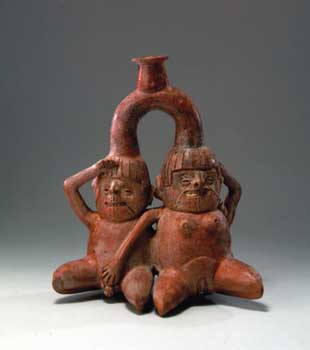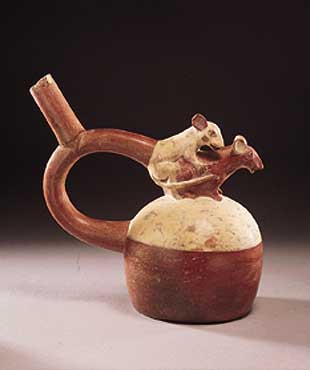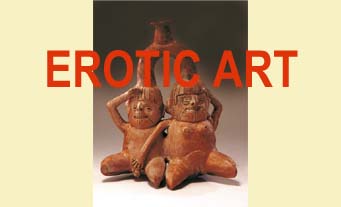The erotic ceramics made by ancient inhabitants of Peru´s coastal area have been studied only a little. It is
likely that the making of erotic vessels started round about 200 B.C. within the Salinar, Gallinazo and Vicús
cultures on the north coast of Peru. The school of art reached its golden age during the period of the Moche
culture around the years 100-700 A.D.
It is almost impossible to discern the meaning of erotic ceramics. However, it is possible, that it was not made purely for aesthetic reasons, but there were other motives in the background, too. Perhaps the most consistent interpretation is to link the erotic ceramic art to practising some sort of fertility and productivity magic.
In addition to realistic scenes of lovemaking and caress, there are also other notable motif groups in ancient Peruvian erotic art. Sometimes a deity is portrayed uniting with a woman. Presentations of this kind have probably portrayed the role of the deity in question as a creator god and support, in their part, the thought of the religious-magical meaning of erotic art. Another story completely is the humoristic vessels representing the male or female sexual organ, from which the liquid has to be drunk or poured as if through this organ. Besides human sex, also animal copulation has been depicted, and even sexual diseases have their place among the large scale of motifs.

The erotic ceramic art of the Salinar culture (200 BC-AD 200) represents the oldest of its kind in ancient Peru.
© Museo Arqueológico Rafael Larco Herrera, Lima, Peru (Cat. 323)
|

The imagery of erotic Moche art includes not only people, but also copulation of animals. It is assumed that erotic art with anthropologic motifs implies, in fact, to
fertility. © Museo Arqueológico Rafael Larco Herrera, Lima, Peru (Cat. 343)
|



